Piroxigod 20 Tablet 10's


MRP ₹120.5
(Inclusive of all Taxes)
₹18.1 Cashback (15%)
Provide Delivery Location
Online payment accepted
 Prescription drug
Prescription drugWhats That
Composition :
Manufacturer/Marketer :
Consume Type :
Return Policy :
Expires on or after :
About Piroxigod 20 Tablet
Piroxigod 20 Tablet belongs to the group of medications known as NSAIDs (Non-Steroidal Anti-Inflammatory Drugs) used to relieve symptoms like pain, inflammation and joint stiffness associated with rheumatoid arthritis and osteoarthritis. Osteoarthritis is a degenerative joint disease in which the two ends of the joints come together due to the breakdown of a protective covering (cartilage). Rheumatoid arthritis is an auto-immune disease (the body's immune system attacks its tissue), leading to joint pain and damage.
Piroxigod 20 Tablet contains 'Piroxicam' that works by blocking the effect of a chemical messenger in the body, known as cyclo-oxygenase (COX) enzymes that make another chemical prostaglandins. Prostaglandins are produced at injury sites and cause pain and swelling. By blocking the effect of COX enzymes, lesser prostaglandins are produced, which reduces mild to moderate pain and inflammation at the injured or damaged site.
Take Piroxigod 20 Tablet as prescribed. In some cases, you may experience certain common side-effects such as diarrhoea, dizziness, nausea, vomiting, and stomach pain. Most of these side-effects do not require medical attention and will resolve gradually over time. However, you are advised to speak to your doctor if you experience these side-effects persistently.
Piroxigod 20 Tablet can increase your risk of a fatal heart attack or stroke. So, if you have had any recent heart bypass surgery, do not take Piroxigod 20 Tablet unless prescribed by the doctor. Piroxigod 20 Tablet increases the chances of stomach ulcers and bleeding. Consult your doctor before taking Piroxigod 20 Tablet if you are pregnant or breastfeeding. Piroxigod 20 Tablet may cause dizziness, so drive with caution. Piroxigod 20 Tablet is not recommended for children as safety and efficacy have not been established. Avoid consuming alcohol along with Piroxigod 20 Tablet as it could lead to increased dizziness. It could also increase the risk of stomach bleeding.
Uses of Piroxigod 20 Tablet
Directions for Use
Medicinal Benefits
Piroxigod 20 Tablet belongs to the group of pain killers known as NSAIDs (Non-Steroidal Anti-Inflammatory Drugs). Piroxigod 20 Tablet is used to relieve symptoms associated with osteoarthritis, and rheumatoid arthritis, such as stiffness, swelling, and joint pain. Piroxigod 20 Tablet works by blocking the effect of a chemical messenger in the body, known as cyclo-oxygenase (COX) enzymes that make another chemical prostaglandins. Prostaglandins are produced at injury sites and cause pain and swelling. By blocking the effect of COX enzymes, fewer prostaglandins are produced, which reduces mild to moderate pain and inflammation at the injured or damaged site.
Storage
- Take medications with food (if recommended): It can help prevent stomach distress and indigestion.
- Eat smaller, more frequent meals: Divide daily food intake into smaller, more frequent meals to ease digestion.
- Avoid trigger foods: Identify and avoid foods that trigger indigestion, such as spicy, fatty, or acidic foods.
- Stay upright after eating: Sit or stand upright for at least 1-2 hours after eating to prevent stomach acid from flowing into the oesophagus.
- Avoid carbonated drinks: Avoid drinking carbonated beverages, such as soda or beer, which can worsen indigestion.
- Manage stress: To alleviate indigestion, engage in stress-reducing activities like deep breathing exercises or meditation.
- Consult a doctor if needed: If indigestion worsens or persists, consult a healthcare professional to adjust the medication regimen or explore alternative treatments.
- Drink water or other clear fluids.
- To prevent worsening of pain, limit intake of tea, coffee, or alcohol.
- Include bland foods like rice, toast, crackers, and rice in your diet.
- Avoid lying down immediately after eating as it may cause indigestion or heartburn.
- Avoid acidic and spicy food as it may cause indigestion.
- Inform your doctor about your constipation symptoms. They may adjust your medication or advise alternative treatments.
- Stay hydrated by drinking sufficient of water (at least 8-10 glasses a day) to help soften stool and promote bowel movements.
- Increase fibre intake by eating foods high in fibre, such as fruits, whole grains, vegetables and legumes, to help bulk up the stool.
- Establish a bowel routine by trying to go to the bathroom at the same time each day to train your bowels.
- Engaging in regular exercise, like walking or yoga, can support in bowel movement stimulation.
- Consult your doctor if constipation persists, and discuss alternative treatments or adjustments to your medication.
- Inform Your Doctor: Notify your doctor immediately about your diarrhoea symptoms. This allows them to adjust your medication or provide guidance on managing side effects.
- Stay Hydrated: Drink plenty of fluids to replace lost water and electrolytes. Choose water, clear broth, and electrolyte-rich drinks. Avoid carbonated or caffeinated beverages to effectively rehydrate your body.
- Follow a Bland Diet: Eat easy-to-digest foods to help firm up your stool and settle your stomach. Try incorporating bananas, rice, applesauce, toast, plain crackers, and boiled vegetables into your diet.
- Avoid Trigger Foods: Steer clear of foods that can worsen diarrhoea, such as spicy, fatty, or greasy foods, high-fibre foods, and dairy products (especially if you're lactose intolerant).
- Practice Good Hygiene: Maintain good hygiene to prevent the spread of infection. To stay healthy, wash your hands frequently, clean and disinfect surfaces regularly, and avoid exchanging personal belongings with others.
- Take Anti-Diarrheal Medications: If your doctor advises, anti-diarrheal medications such as loperamide might help manage diarrhoea symptoms. Always follow your doctor's directions.
- Keep track of your diarrhoea symptoms. If they don't get better or worse or are accompanied by severe stomach pain, blood, or dehydration signs (like extreme thirst or dark urine), seek medical help.
- Take medications with food (if recommended): It can help prevent stomach distress and indigestion.
- Eat smaller, more frequent meals: Divide daily food intake into smaller, more frequent meals to ease digestion.
- Avoid trigger foods: Identify and avoid foods that trigger indigestion, such as spicy, fatty, or acidic foods.
- Stay upright after eating: Sit or stand upright for at least 1-2 hours after eating to prevent stomach acid from flowing into the oesophagus.
- Avoid carbonated drinks: Avoid drinking carbonated beverages, such as soda or beer, which can worsen indigestion.
- Manage stress: To alleviate indigestion, engage in stress-reducing activities like deep breathing exercises or meditation.
- Consult a doctor if needed: If indigestion worsens or persists, consult a healthcare professional to adjust the medication regimen or explore alternative treatments.
- Preventing Vomiting (Before it Happens)
- Take medication exactly as prescribed by your doctor. This can help minimize side effects, including vomiting.
- Having a small meal before taking your medication can help reduce nausea and vomiting.
- Talk to your doctor about taking anti-nausea medication along with your prescribed medication.
- Managing Vomiting (If it Happens)
- Try taking ginger in the form of tea, ale, or candy to help alleviate nausea and vomiting.
- What to Do if Vomiting Persists
- Consult your doctor if vomiting continues or worsens, consult the doctor for guidance on adjusting your medication or additional treatment.
Drug Warnings
Piroxigod 20 Tablet may increase the risk of serious heart-related problems, like heart attack and stroke. So, if you are a heart patient, let your doctor know before taking Piroxigod 20 Tablet . Besides this, Piroxigod 20 Tablet may also cause stomach and intestinal bleeding/ulcers, so let your doctor know if you have these problems. Do not take Piroxigod 20 Tablet if you have had heart bypass surgery or coronary artery bypass graft surgery (CABG) as it can increase your risk of a heart attack or stroke. Consult your doctor before taking Piroxigod 20 Tablet if you are pregnant or breastfeeding. Piroxigod 20 Tablet may cause drowsiness and dizziness, so drive only if you are alert. Piroxigod 20 Tablet is not recommended for children as safety has not been established. Avoid consuming alcohol along with Piroxigod 20 Tablet as it could lead to increased drowsiness and can increase the risk of stomach bleeding. Tell your doctor before taking Piroxigod 20 Tablet if you have asthma, water retention (oedema) or high blood pressure, stuff/runny nose, nasal polyps, liver or kidney problems.
Drug-Drug Interactions
Drug-Drug Interactions
Login/Sign Up
Co-administration of Cidofovir with Piroxigod 20 Tablet can increase the risk of kidney problems.
How to manage the interaction:
Taking Piroxigod 20 Tablet with Cidofovir is not recommended as it can cause an interaction, it can be taken together if prescribed by a doctor. However, if you experience nausea, vomiting, loss of hunger, increased or decreased urination, sudden weight gain or loss, fluid retention, swelling, shortness of breath, muscle cramps, tiredness, dizziness, confusion, or an irregular heart rhythm, consult a doctor. Do not discontinue any medications without consulting a doctor.
Using ketorolac tromethamine together with Piroxigod 20 Tablet may increase the risk of side effects.
How to manage the interaction:
Taking Piroxigod 20 Tablet with Ketorolac tromethamine is not recommended as it can cause an interaction, it can be taken if prescribed by the doctor. Consult a doctor if you experience any unusual bleeding or bruising, dizziness, lightheadedness, red or black, tarry stools, coughing up or vomiting fresh or dried blood that looks like coffee grounds, severe headache, and weakness. Do not stop using any medications without talking to a doctor.
Using Piroxigod 20 Tablet together with flurbiprofen may increase the risk of side effects such as inflammation(swelling with redness and pain), bleeding and ulceration.
How to manage the interaction:
Although there is a possible interaction between Flurbiprofen and Piroxigod 20 Tablet, it can be taken if your doctor has advised it. However, if you experience dizziness, lightheadedness, red or black, tarry stools, coughing up or vomiting fresh or dried blood that looks like coffee grounds, severe headache, and weakness, contact a doctor immediately. Do not discontinue any medications without consulting a doctor.
Coadministration of Piroxigod 20 Tablet with Ketoprofen can increase the risk of side effects such as inflammation(swelling with redness and pain), bleeding, ulceration.
How to manage the interaction:
Although there is a possible interaction between Piroxigod 20 Tablet and Ketoprofen, you can take these medicines together if prescribed by a doctor. However, if you experience unusual bleeding or bruising, dizziness, lightheadedness, red or black, tarry stools, coughing up or vomiting fresh or dried blood that looks like coffee grounds, severe headache, and weakness, consult the doctor. Do not stop using any medications without talking to a doctor.
Coadministration of Nabumetone with Piroxigod 20 Tablet can increase the risk of side effects inflammation(swelling with redness and pain), bleeding, ulceration, and perforation.
How to manage the interaction:
Co-administration of Piroxigod 20 Tablet with Nabumetone can result in an interaction, but it can be taken if a doctor has advised it. However, if you experience unusual bleeding or bruising, dizziness, lightheadedness, red or black, tarry stools, coughing up or vomiting fresh or dried blood that looks like coffee grounds, severe headache, and weakness, consult the doctor. Do not stop using any medications without talking to a doctor.
Coadministration of Piroxigod 20 Tablet and Lomitapide may increase the risk of liver injury.
How to manage the interaction:
There may be a possibility of interaction between Piroxigod 20 Tablet and Lomitapide, but it can be taken if prescribed by a doctor. However, if you have any of the following symptoms: fever, chills, joint pain or swelling, unusual bleeding or bruising, skin rash, itching, fatigue, lack of hunger, nausea, vomiting, abdominal pain, dark urine, light stools, and/or yellowing of the skin or eyes, consult a doctor immediately. Do not stop using any medications without a doctor's advice.
Coadministration of celecoxib with Piroxigod 20 Tablet can increase the risk and severity of gastrointestinal toxicity.
How to manage the interaction:
Although there is a interaction between Piroxigod 20 Tablet and Celecoxib, but it can be taken if your doctor has advised it. However, consult a doctor if you experience symptoms like blood in your urine or stool (or a black stool), severe bruising, prolonged nosebleeds, feeling dizzy or lightheaded, weakness or severe headache, vomiting blood or coughing up blood, heavy menstrual bleeding (in women), difficulty breathing, or chest pain. Do not discontinue any medication without consulting a doctor.
Coadministration of Tolmetin with Piroxigod 20 Tablet can increase the risk of side effects (inflammation, bleeding, ulceration, and rarely, perforation).
How to manage the interaction:
There may be a possibility of interaction between Piroxigod 20 Tablet and Tolmetin, but it can be taken if prescribed by a doctor. However, if you experience unusual bleeding or bruising, dizziness, lightheadedness, red or black, tarry stools, coughing up or vomiting fresh or dried blood that looks like coffee grounds, severe headache, and weakness, consult the doctor. Do not discontinue any medication without consulting a doctor.
Coadministration of Naproxen and Piroxigod 20 Tablet can increase the risk or severity of stomach bleeding, inflammation(swelling with redness and pain), ulcers.
How to manage the interaction:
There may be a possible interaction between Naproxen and Piroxigod 20 Tablet, but they can be taken together if they are prescribed by doctor. However, if you experience unusual bleeding or bruising, dizziness, lightheadedness, red or black, tarry stools, coughing up or vomiting fresh or dried blood that looks like coffee grounds, severe headache, and weakness, consult the doctor. Do not discontinue any medication without a doctor's advice.
Coadministration of Piroxigod 20 Tablet with Fenoprofen can increase the risk of side effects such as inflammation(swelling with redness and pain), bleeding, ulceration.
How to manage the interaction:
Taking Piroxigod 20 Tablet with Fenoprofen together can result in an interaction, but it can be taken if a doctor has advised it. However, if you experience unusual bleeding or bruising, dizziness, lightheadedness, red or black, tarry stools, coughing up or vomiting fresh or dried blood that looks like coffee grounds, severe headache, and weakness, consult the doctor. Do not stop using any medications without talking to a doctor.
Drug-Food Interactions
Drug-Food Interactions
Login/Sign Up
Diet & Lifestyle Advise
- Physical activity helps in strengthening muscles and relieves joint stiffness. Gentle activities like 20-30minutes of walking or swimming would be helpful.
- Performing yoga may also help in improving joint flexibility and pain management.
- Maintain a healthy weight by performing regular low-strain exercises and eating healthy food.
- Get adequate sleep as resting the muscles can help in reducing inflammation and swelling.
- Follow heat or cold therapy, apply a cold or hot compress on the joints for 15-20minutes regularly.
- De-stress yourself by meditating, reading books, taking a warm bubble bath, or listening to soothing music.
- Acupuncture, massage, and physical therapy may also be helpful.
- Eat food rich in antioxidants such as berries, spinach, kidney beans, dark chocolate, etc.
- Foods containing flavonoids help in reducing inflammation. These include soy, berries, broccoli, grapes, and green tea.
- Avoid smoking and alcohol consumption.
Side Effects of Piroxigod 20 Tablet
- Diarrhoea
- Dizziness
- Nausea
- Vomiting
- Stomach pain
Habit Forming
Therapeutic Class
All Substitutes & Brand Comparisons
RX
Out of StockDolocam 20mg Tablet DT
₹68.8
(₹2.48 per unit)
77% CHEAPERRX
Pinij DT Tablet 10's
Sunij Pharma Pvt Ltd
₹52.5
(₹4.73 per unit)
56% CHEAPERRX
MOBICAM DT 20MG TABLET
Cipla Ltd
₹73
(₹6.57 per unit)
39% CHEAPER
Product Substitutes
Author Details
We provide you with authentic, trustworthy and relevant information
Drug-Diseases Interactions
Drug-Diseases Interactions
Login/Sign Up
FAQs
Piroxigod 20 Tablet works by blocking the effect of chemical messengers (prostaglandin), thereby reducing joint pain, stiffness, swelling, and inflammation.
Diarrhoea might be a side-effect of Piroxigod 20 Tablet . Drink lots of fluids and eat non-spicy food if you experience diarrhoea. If you find blood in stools (tarry stools) or experience severe diarrhoea, consult your doctor. Do not take anti-diarrheal medicine on your own.
Do not take Piroxigod 20 Tablet for longer durations or high doses as it may cause unpleasant side effects. Do not exceed the dose and duration prescribed by your doctor.
Piroxigod 20 Tablet may increase the risk of heart attack or stroke. Do not use Piroxigod 20 Tablet immediately before or after bypass surgery. Inform your doctor if you have heart problems.
Consult your doctor before taking Piroxigod 20 Tablet if you have diabetes as Piroxigod 20 Tablet might increase the blood sugar levels.
Drug-Drug Interactions Checker List
- DULOXETINE
- SERTRALINE
- METOPROLOL
- CELECOXIB
Disease/Condition Glossary
Osteoarthritis: It is a degenerative joint disease in which the two ends of the joints come together due to the breakdown of a protective covering called cartilage. Due to the absence of this protective covering, the joints rub against each other, leading to pain and stiffness. Symptoms of osteoarthritis include pain, stiffness, inflammation, and tenderness. The main reason for osteoarthritis is age; the older you are, the more likely you could get osteoarthritis, thus known as degenerative disease, meaning that the joints wear out as a person ages. Other reasons might include a past injury such as torn cartilage, dislocated joints, and ligament injuries.
Rheumatoid arthritis: It is an auto-immune disease (the body's immune system attacks its tissue), leading to joint pain and damage. Symptoms of rheumatoid arthritis include pain, swelling, stiffness, deformities, and loss of joint function.

Have a query?
Buy best C.n.s Drugs products by
Intas Pharmaceuticals Ltd
Sun Pharmaceutical Industries Ltd
Torrent Pharmaceuticals Ltd
Alkem Laboratories Ltd
Abbott India Ltd
Cipla Ltd
Alteus Biogenics Pvt Ltd
Micro Labs Ltd
Lupin Ltd
Ipca Laboratories Ltd
D D Pharmaceuticals Pvt Ltd
Icon Life Sciences
Mankind Pharma Pvt Ltd
Tripada Healthcare Pvt Ltd
Arinna Lifesciences Ltd
Linux Laboratories Pvt Ltd
East West Pharma India Pvt Ltd
La Renon Healthcare Pvt Ltd
Talent India Pvt Ltd
Tas Med India Pvt Ltd
Zydus Healthcare Ltd
Cnx Health Care Pvt Ltd
Eris Life Sciences Ltd
Leeford Healthcare Ltd
Emcure Pharmaceuticals Ltd
Macleods Pharmaceuticals Ltd
Sigmund Promedica
Aristo Pharmaceuticals Pvt Ltd
Dr Reddy's Laboratories Ltd
Troikaa Pharmaceuticals Ltd
Consern Pharma Ltd
Zydus Cadila
Shine Pharmaceuticals Ltd
Wockhardt Ltd
Ardent Life Sciences Pvt Ltd
Crescent Formulations Pvt Ltd
Theo Pharma Pvt Ltd
Reliance Formulation Pvt Ltd
Ikon Pharmaceuticals Pvt Ltd
Propel Healthcare
Neon Laboratories Ltd
Jagsam Pharma
Msn Laboratories Pvt Ltd
Morepen Laboratories Ltd
Pulse Pharmaceuticals
Sanofi India Ltd
Med Manor Organics Pvt Ltd
Hetero Healthcare Pvt Ltd
Novartis India Ltd
Crescent Therapeutics Ltd
Elder Pharmaceuticals Ltd
Solvate Laboratories Pvt Ltd
Akumentis Healthcare Ltd
Mova Pharmaceutical Pvt Ltd
Psyco Remedies Ltd
Tripada Lifecare Pvt Ltd
Ajanta Pharma Ltd
Cyrus Remedies Pvt Ltd
Medishri Healthcare Pvt Ltd
Cadila Healthcare Ltd
Glenmark Pharmaceuticals Ltd
Matteo Health Care Pvt Ltd
Hbc Life Sciences Pvt Ltd
Lyf Healthcare
Matias Healthcare Pvt Ltd
Mesmer Pharmaceuticals
Alembic Pharmaceuticals Ltd
Capital Pharma
Crescent Pharmaceuticals
Medopharm Pvt Ltd
Alniche Life Sciences Pvt Ltd
Kivi Labs Ltd
Talin Remedies Pvt Ltd
USV Pvt Ltd
Quince Lifesciences Pvt Ltd
Solis Pharmaceuticals
Infivis Life Care
Zuventus Healthcare Ltd
Cadila Pharmaceuticals Ltd
Pfizer Ltd
Wallace Pharmaceuticals Pvt Ltd
A N Pharmacia Laboratories Pvt Ltd
Blue Cross Laboratories Pvt Ltd
Jenburkt Pharmaceuticals Ltd
Lia Life Sciences Pvt Ltd
Mano Pharma
Medley Pharmaceuticals Ltd
Primus Remedies Pvt Ltd
FDC Ltd
Maneesh Pharmaceuticals Ltd
Apex Laboratories Pvt Ltd
Gagnant Healthcare Pvt Ltd
Ozone Pharmaceuticals Ltd
RPG Life Sciences Ltd
Strides Shasun Ltd
Unichem International
GlaxoSmithKline Pharmaceuticals Ltd
Kuresys Labs Pvt Ltd
LA Pharma
Trion Pharma India Llp
Alcohol
Unsafe
You are recommended to avoid alcohol consumption while taking Piroxigod 20 Tablet . Alcohol intake, along Piroxigod 20 Tablet may cause increased dizziness. It may also cause an increase in the risk of stomach/intestine ulcers and bleeding.
Pregnancy
Caution
Avoid taking Piroxigod 20 Tablet if you are pregnant unless prescribed by the doctor. Please consult your doctor if you have any concerns regarding this; your doctor will prescribe Piroxigod 20 Tablet only if the benefits outweigh the risks. Do not take Piroxigod 20 Tablet in the last 20 weeks of pregnancy as it may cause serious kidney and heart problems in the unborn baby and complications with the pregnancy.
Breast Feeding
Unsafe
Avoid breastfeeding while taking Piroxigod 20 Tablet . Please consult your doctor if you have any concerns.
Driving
Caution
Piroxigod 20 Tablet may cause dizziness. Do not drive or operate heavy machinery if you experience dizziness.
Liver
Caution
Dose adjustment may be needed. Piroxigod 20 Tablet should be used with caution in patients with liver impairment/liver disease. Please consult your doctor if you have a liver impairment or any concerns regarding this.
Kidney
Caution
Dose adjustment may be needed. Piroxigod 20 Tablet should be used with caution in patients with kidney impairment/kidney disease. Please consult your doctor if you have kidney impairment or any concerns regarding this.
Children
Unsafe
Piroxigod 20 Tablet is not recommended for children, as the efficacy and safety have not been established.



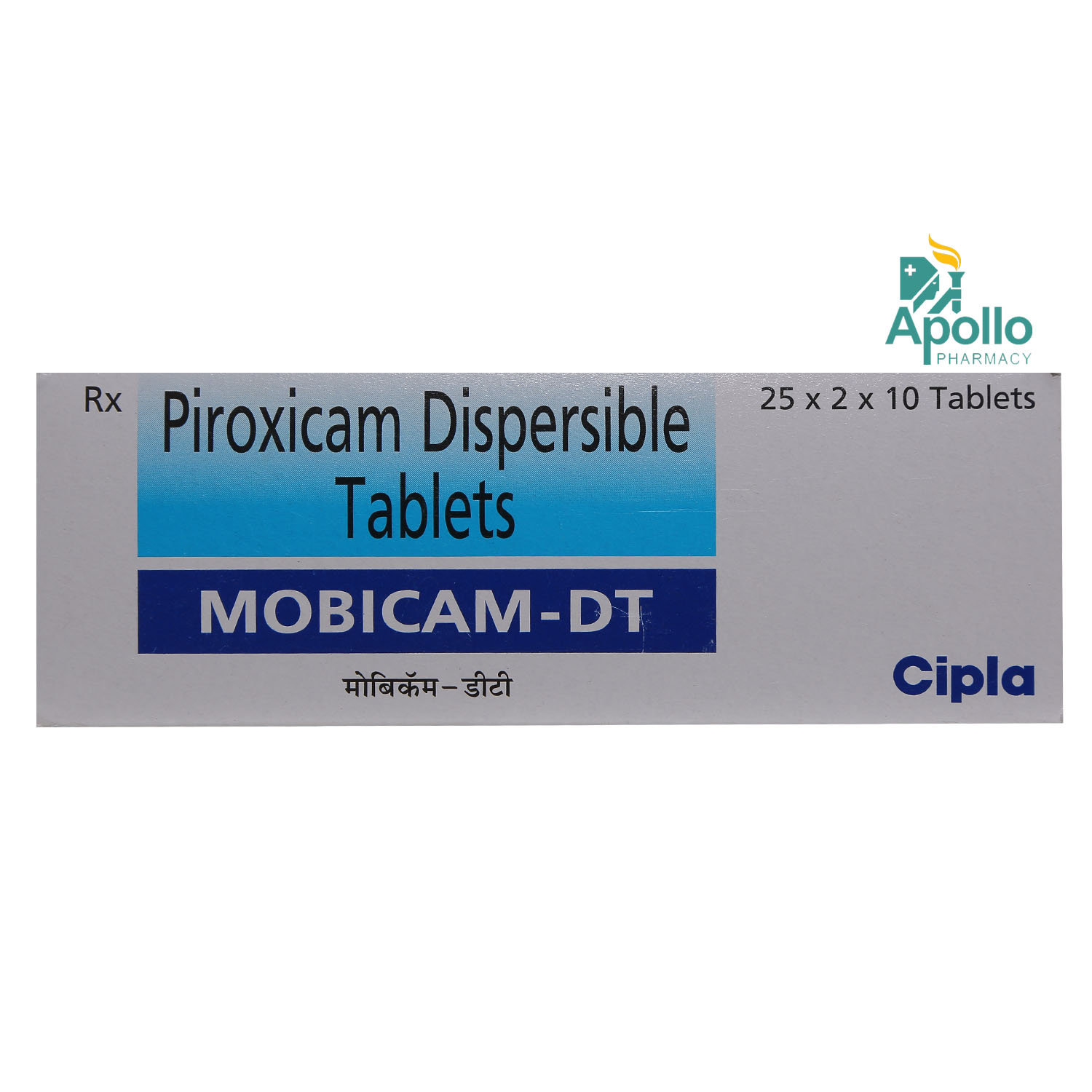
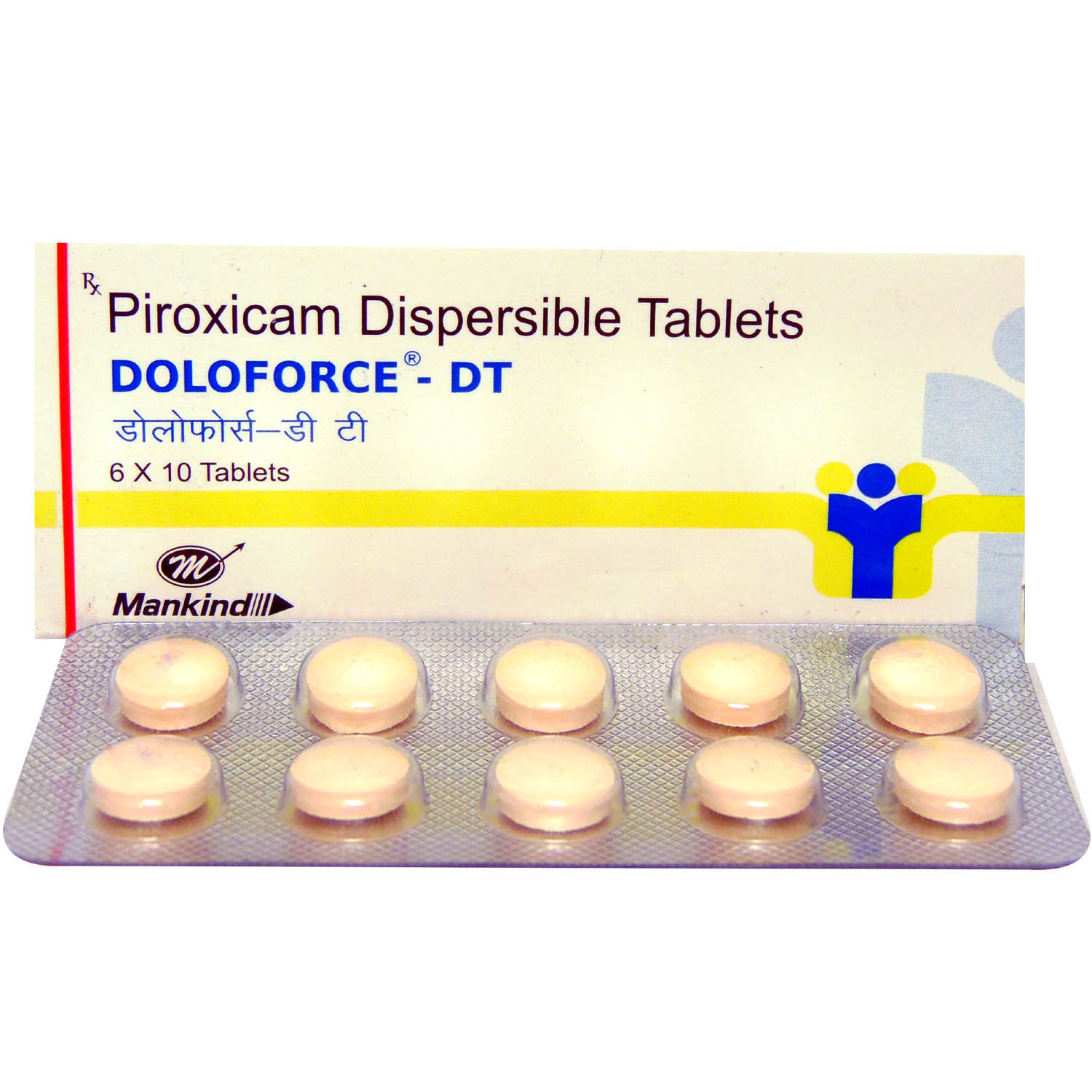
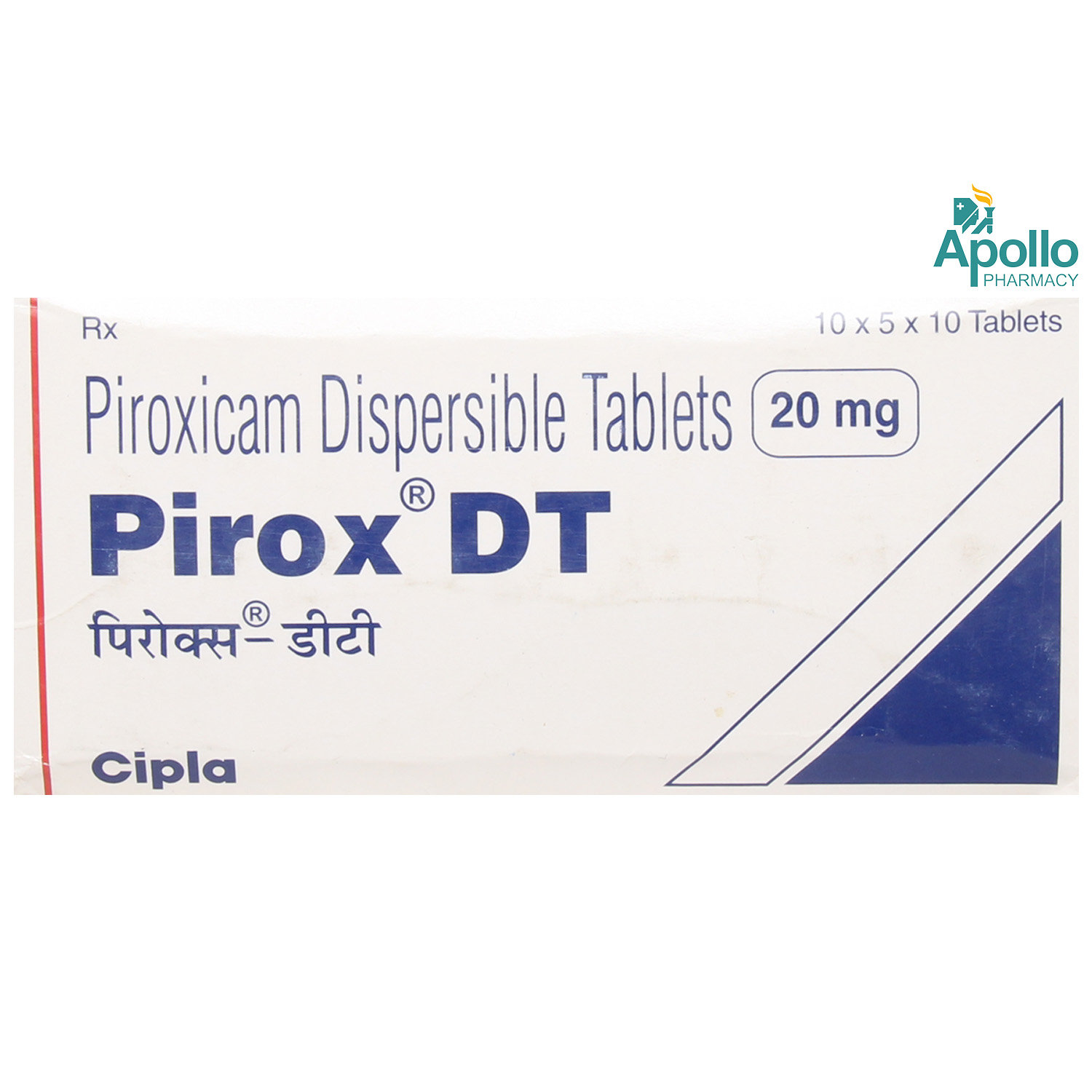


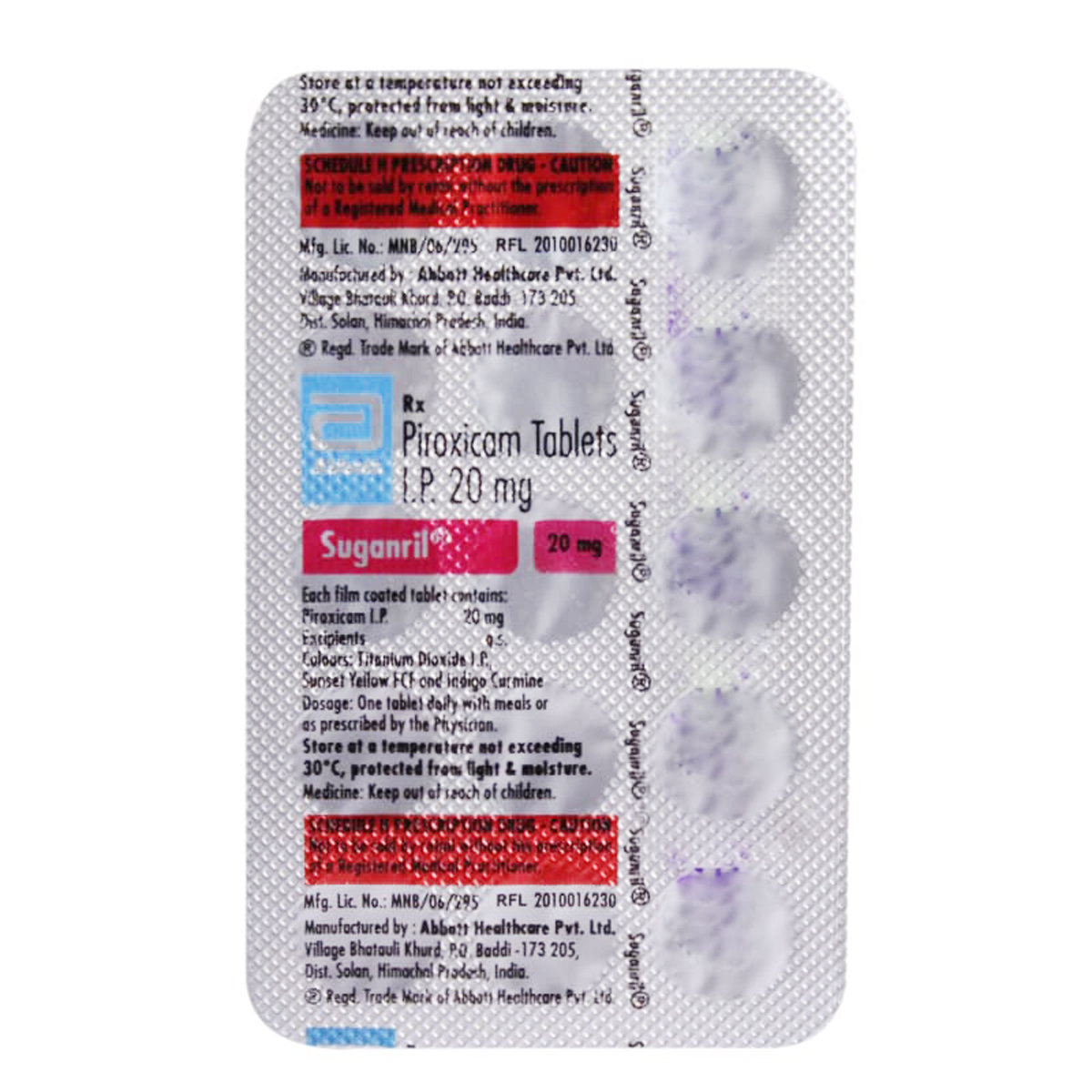
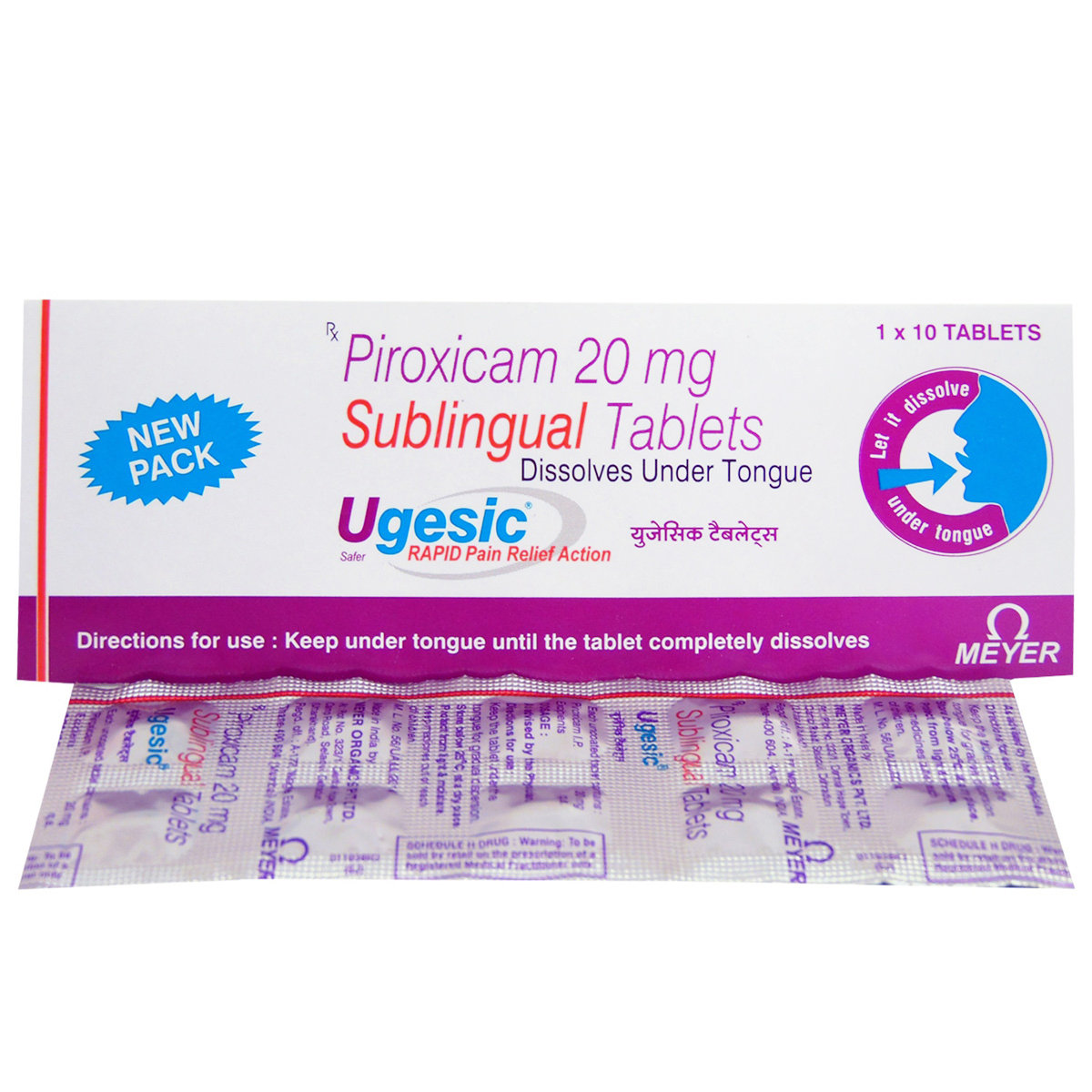
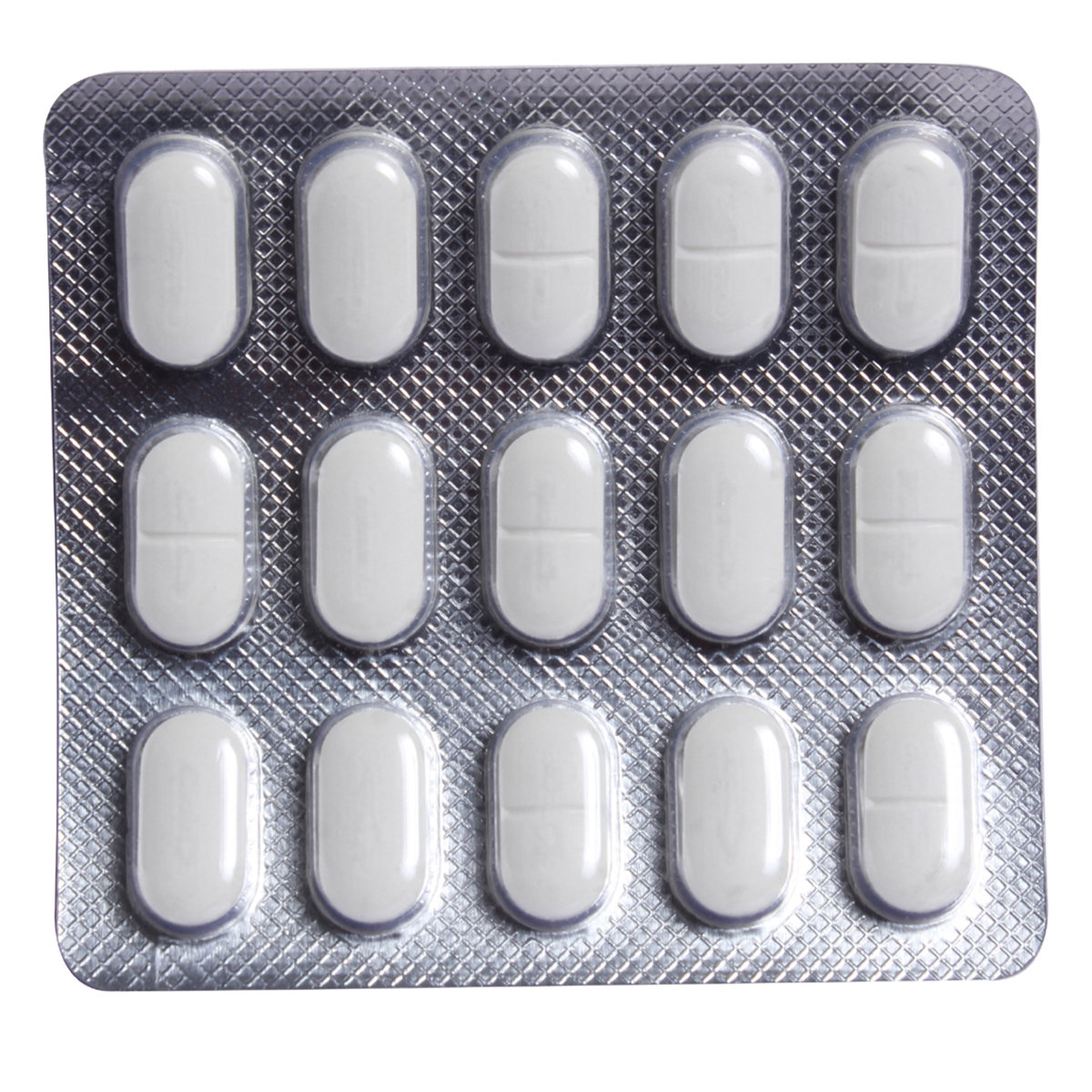



_0.jpg?tr=q-85)

